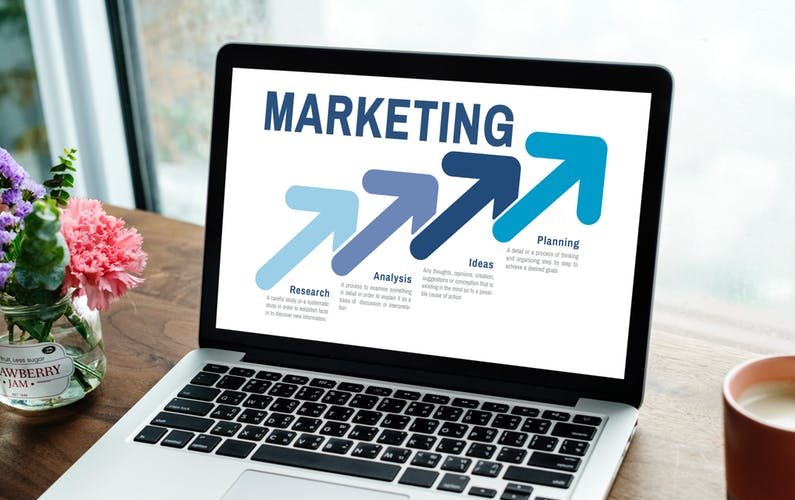10 Digital Marketing Terms Every Successful Entrepreneur Knows
There are a million digital marketing terms, acronyms, and lingoes that get thrown around all over the web. These can become so commonplace that it’s almost embarrassing to ask what they are at this point.
Don’t worry, pretty much everyone is unsure about at least one of these terms, and there’s nothing wrong with missing out on one or two.
We’re here to give you 10 must know terms so you’re up-to-date.
10 Digital Marketing Terms You Need to Know
Some of these terms are absolutely essential, so you may already know them. That said, we’ll have to cover them just in case.
1. SEO
Search engine optimization is one of the most important elements of digital marketing. It’s the process of making your site look good in the eyes of a search engine so that you can rank highly in the results.
Many of the terms in this article will be related to SEO.
2. Keywords
You probably know the general term “keyword.” In terms of optimization, though, it relates to the words that users put into search engines.
You should research the most popular keywords in your niche (we’ll cover that term next), and create your content with those keywords laced throughout your writing.
3. Niche
This term is another one that has meaning outside of digital marketing. Generally, a niche is an area of content.
So, your niche will generally pertain to the kind of content you have on your site and the other sites that also create that sort of content. You should look to the successful sites in your niche for inspiration on how to market your own site.
4. Backlinking
Backlinks are links to your site from another site. If search engines were like a democratic election, backlinks would serve as votes in your favor. Links from high-power sites have more influence than those from unpopular ones.
Further, sites in your niche will give more valuable backlinks.
5. Search Engine Algorithms
The search engine algorithm is the formula that search engines like Google use in order to select the most relevant sites for their search results.
These are very complicated formulas, but SEO is ultimately the process of trying to understand them and using what we learn to make our sites fit better into the algorithm to rank higher.
6. PPC
PPC stands for “pay-per-click” advertising. This is a form of advertising that can be used in a number of different spaces. Social media and search engines are just two of the primary places where PPC is used.
The great value of PPC comes from the fact that the platforms it’s used on are highly specific when it comes to placement, and you only have to pay when your advertisement is clicked.
That way, you know that each advertising dollar you put in is one that went toward visibility for your site. When thinking about the platform to employ your PPC dollar into, you should think about doing some customer research.
Some niches have users that frequent different social media sites or search engines. You should also consider your end goal before you start to put money into PPC. Users who frequent Pinterest, for example, are more inclined to make purchases as they browse through the site.
People using Facebook, on the other hand, are more likely to make downloads and provide social shares. Depending on your marketing goal, you would want to choose one site or the other.
7. Conversions
A conversion is an instance where one user follows your marketing platform down to the point where it’s time to make a download or finalize a sale, and it actually goes through.
A conversion can ultimately be thought of as a success. They can come in different forms, as different businesses have different goals for their users. Maybe you want to sell a product, maybe you want to get a download, whatever your goal is, a conversion is when it becomes realized.
Follow the link if you want to learn more about how to use SEO and PPC to lead conversions.
8. Long and Short Tail Keywords
Not all keywords are made the same. Short tail keywords are those that have only one or two words. Long tail keywords are those that would be more considered to be phrases.
So, “football cleats” could be considered a short tail keyword. “Pink football cleats for youth athletes” would be considered a long tail keyword. When it comes to ranking for these words in the results pages, you’re typically going to have more luck when it comes to the long tail phrases.
These are more specific and less likely to have a lot of competition. If you were to search “buy trucks,” you’d probably find that the results were bogged down by industry leaders.
It’s difficult to compete with companies that have millions of dollars for marketing at their disposal, so you’ll want to be more specific. “Buy super cool trucks with disco balls installed” would be a keyword with less competition that you could likely rank for.
9. CTR
The CTR, short for “click-through rate,” is a measure of the number of clicks that a particular ad or post gets. This is a relatively simple term, in that it simply shows you how many clicks your item has gotten.
That said, the acronym “CTR” is very commonly used in blogs and articles relating to digital marketing.
10. SERPS
SERPS stands for “search engine results pages.” This is another one that seems really common and intuitive, but it’s crucial that you know what the acronym means.
This is exactly what it sounds like. SERPS are the pages that come up when a user types in specific keywords and generates a response page. Ranking highly in the SERPS is one direct path to online success for a business.
Want to Know More About Digital Marketing?
Digital marketing terms are just the doorway to a huge industry. It’s essential that you understand a little bit about the ins and outs of digital marketing if you’re trying to find success online.
Visit our site for more information about how to start making moves in SEO, PPC, and ranking highly in the SERPS.









